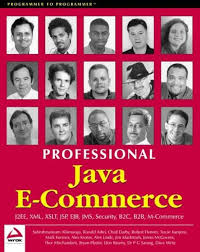Crafting a Multi-Tenant E-commerce Platform with Spring Boot and React: A White Paper
1. Introduction
In today's digital age, e-commerce has revolutionized the way businesses operate. Traditional e-commerce platforms often struggle to scale and manage multiple tenants efficiently. Multi-tenancy offers a solution by allowing multiple organizations to share a single application instance, reducing costs and increasing flexibility. This white paper explores the design and implementation of a multi-tenant e-commerce platform built on Spring Boot and React.
2. Multi-Tenancy Architecture
2.1 Core Concepts
- Tenant Isolation: Ensuring data and configuration are segregated for each tenant.
- Tenant Identification: Identifying the current tenant through various mechanisms like request headers, subdomains, or database schemas.
- Context Propagation: Propagating tenant information across different layers of the application.
2.2 Technical Implementation
- Spring Boot:
- Tenant Identifier Resolver: A component to extract the tenant ID from the request.
- Tenant Context: A class to hold tenant-specific information and propagate it throughout the application.
- Data Isolation:
- Schema-based: Creating separate schemas for each tenant.
- Database-based: Using different databases for each tenant.
- Table-based: Adding a tenant ID column to tables and filtering data based on it.
- React:
- Tenant-Aware Routing: Routing to tenant-specific pages or components.
- Tenant-Specific Styling and Branding: Dynamically loading CSS and other assets based on the tenant.
3. E-commerce Platform Features
3.1 Product Catalog
- Product Management: Create, edit, and delete products.
- Product Categories: Organize products into hierarchical categories.
- Product Variations: Manage product variations like size, color, and material.
- Product Search and Filtering: Implement robust search and filtering capabilities.
3.2 Shopping Cart and Checkout
- Add to Cart: Allow users to add products to their cart.
- Cart Management: View, edit, and remove items from the cart.
- Checkout Process: Guide users through a seamless checkout process, including guest checkout and account creation.
- Payment Gateway Integration: Integrate with popular payment gateways like Stripe, PayPal, and Braintree.
3.3 User Accounts and Profiles
- User Registration and Login: Implement secure user registration and login.
- User Profiles: Allow users to manage their personal information and preferences.
- Order History: Provide access to past orders and order details.
- Wishlists: Enable users to save products for future reference.
4. Security and Performance
4.1 Security Considerations
- Authentication and Authorization: Implement strong authentication and authorization mechanisms.
- Data Encryption: Protect sensitive data using encryption techniques.
- Input Validation and Sanitization: Prevent security vulnerabilities like SQL injection and cross-site scripting (XSS).
- Security Audits and Testing: Regularly conduct security audits and penetration testing.
4.2 Performance Optimization
- Caching: Utilize caching strategies to reduce database load and improve response times.
- Database Optimization: Optimize database queries and indexes.
- Load Balancing: Distribute traffic across multiple servers to handle increased load.
- Performance Monitoring and Profiling: Monitor application performance and identify bottlenecks.
5. Conclusion
By effectively combining Spring Boot and React, you can create a scalable and robust multi-tenant e-commerce platform. This white paper provides a solid foundation for building such a platform, addressing key architectural considerations and technical implementation details.
References
- Spring Boot Documentation: https://react.dev/
- Multi-Tenancy in Spring Boot: https://www.cloudways.com/blog/ecommerce-best-practices/
- Security Best Practices: https://sematext.com/blog/improve-website-performance/
Additional Considerations:
- Customization: Allow tenants to customize their storefronts, branding, and product offerings.
- Analytics and Reporting: Provide insights into sales, customer behavior, and other key metrics.
- Integrations: Integrate with third-party services like email marketing, CRM, and ERP.
- Scalability: Design the platform to scale horizontally and vertically to accommodate growing user base and traffic.
- Testing and Deployment: Implement thorough testing and deployment processes to ensure quality and reliability.
By addressing these aspects, you can build a successful multi-tenant e-commerce platform that meets the needs of diverse businesses. Contact ias-research.com for details.



